|
Monday, November 8, 2010
Progress Notes
Recently, Dr. Victor Berry and his wife Nancy, of Okatie, South Carolina, visited our museum (photo 01).
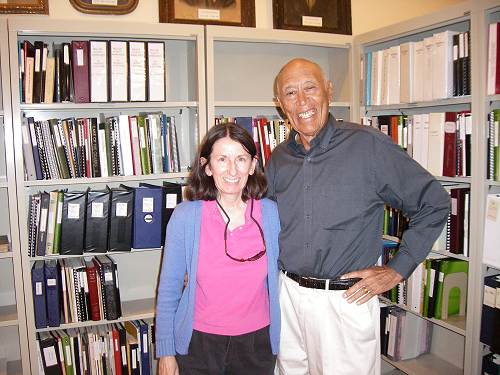
01 Nancy and Dr. Victor Berry Victor is a retired veterinarian who was raised on a farm at Valley Center, Kansas, a small town near Wichita. He spent his career as a veterinarian in the U.S. Department of Agriculture in the Department of Inspection. His wife Nancy is from Ohio. Before retirement she worked for the U.S. Department of State Foreign Service Office in Korea and Austria.
I asked Victor and Nancy just what brought them to our small community and museum. Victor said that for several years he has been interested in learning more about the history of his great grandfather, William R. Johnson, who served in the U.S. Colored Cavalry during the Civil War. William moved to Miller County from Ohio after the war in the 1860’s. Most likely, Victor said, William came here because this area still had quite a lot of land which could be homesteaded. However, Victor said that the process of acquiring land by the Homestead Act was really not all that simple. Indeed, if you peruse all the documents Victor collected regarding his great grandfather William’s efforts to secure land in Miller County you might be surprised. I have copied all the records Victor found regarding his great grandfather William’s efforts to acquire his property in Miller County and have them placed in the following collage (photos 02 - 15):
Click on any of the photo thumbnails to view a larger image.
Note: Once you click on an image below, a new window will open. It would be best to maximize this new window by clicking on the middle box in the upper right-hand corner of the window. When you move your cursor over the image in this new window, it will change to a magnifying glass. Once this occurs, click on the image and it will show in a larger format for easier viewing.
I noticed that in one of the documents (photo number 07), two of William’s neighbors were cosigners of an affidavit attesting to William’s good standing in the community. One of the cosigners was Samuel P. Hickman M.D. who was a well known physician at the time (photo 16).
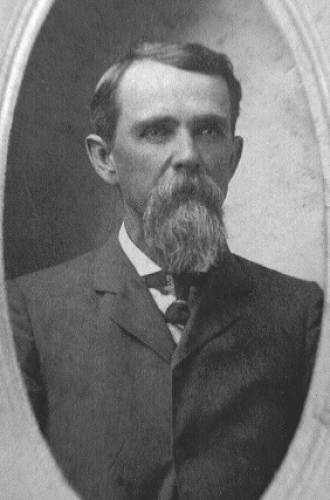
16 Samuel Peter Hickman M.D. You can read about him at this previous Progress Notes.
The other cosigner was William Lollis about whom you can read in the historical narrative Peggy Hake wrote regarding early Miller County black citizens.
William’s land finally was recorded in 1877 and was located in Township 39N Range 15W. The next photo is of T39N R15W and you will find William’s name on parcels of land in the northeast corner of Section 15 and the northwest corner of Section 14 (photo 17).
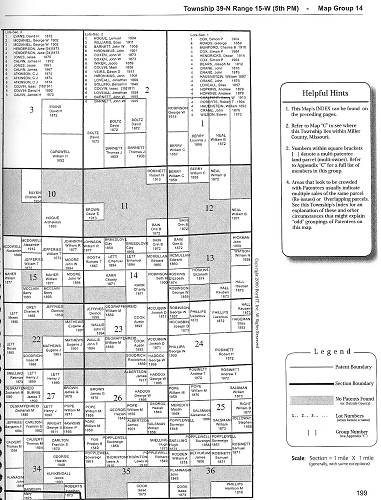
17 T39N - R15W
Click image for larger viewHowever, by the year 1905 the plat map of this same property indicates different owners. William and his wife, Lydia, both died before 1905 as indicated by their tombstones which are located in Gott Cemetery so their farm land had been sold well before the 1905 plat map was recorded. In fact, if you look at the Gott Cemetery record of their tombstones you will read the following information as recorded in the next photo (photo 18):
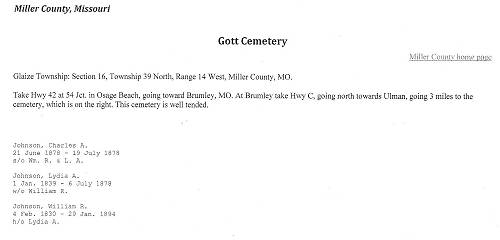
18 William R. Johnson Family Burials in Gott Cemetery
Click image for larger viewThe tombstone indicates Lydia and an infant son both died in 1878, only a year after their farm was legally homesteaded. William died in 1894. Victor, through meticulous research, has compiled a time line of his great grandfather William’s life which is documented in the following two photos (photos 19 and 20).
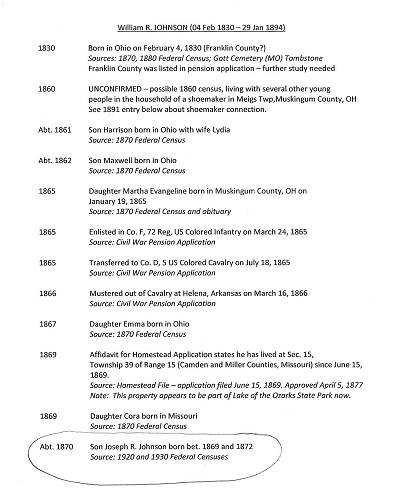
19 William R. Johnson History 1
Click image for larger view
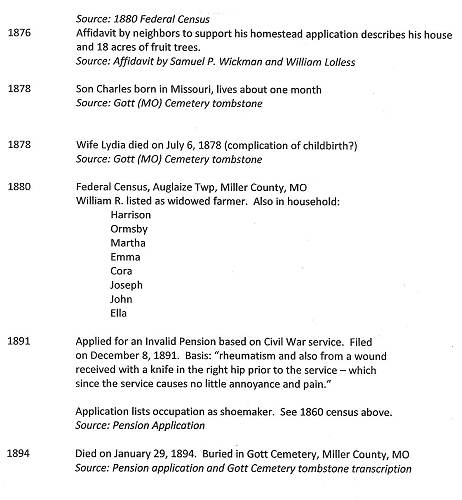
20 William R. Johnson History 2
Click image for larger viewOne of William’s daughters, Martha Evangeline Johnson, married Leander Green Berry of Camden County. Here are photos of Martha (usually called Eva) and Leander (photos 21 and 22):
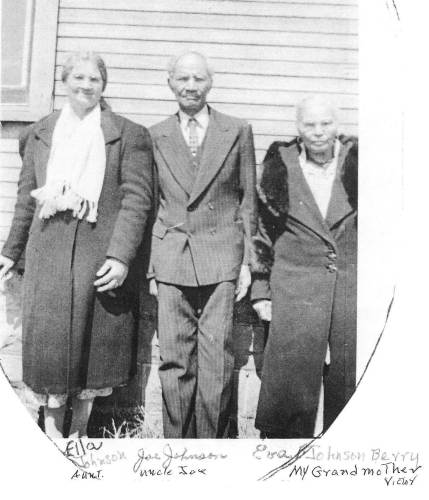
21 Victor's Grandmother Eva
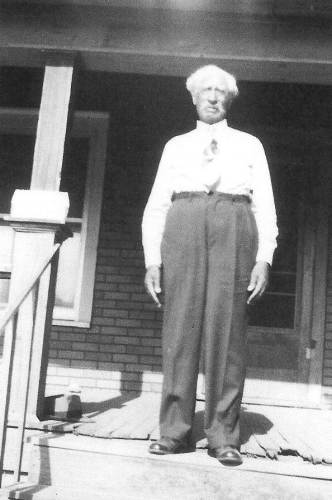
22 Leander Green Berry A census of Camden County performed when Leander was twelve years old indicates the head of the household, A.H.D. Berry, was Caucasian (photo 23).
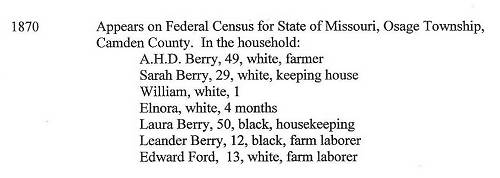
23 Leander Green Berry History 1
Click image for larger viewVictor says we can’t assume very much about Leander’s surname since in those times immediately after the Civil War the surname didn’t necessarily indicate lineage. Leander and Eva left Missouri for Kansas, then spent some years in Oklahoma before being located later back in Kansas. Here is a time line of their life as compiled by Victor and Nancy (photos 24 and 25):
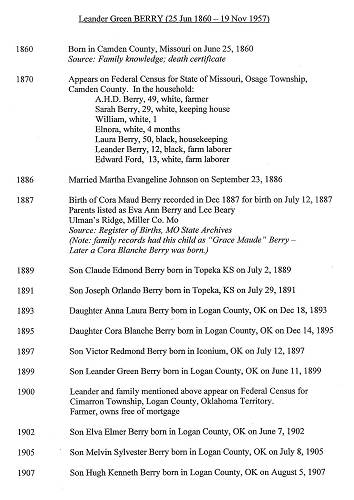
24 Leander Green Berry History 2
Click image for larger view
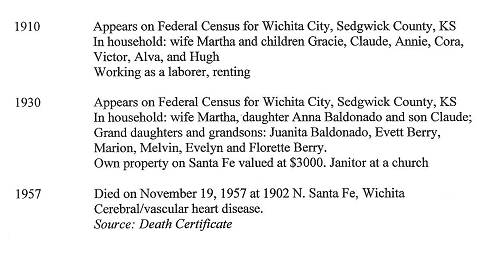
25 Leander Green Berry History 3
Click image for larger viewOf Leander and Eva’s several children was Victor’s father, also named Victor. Victor Berry, the father of Victor the veterinarian, took his family to a farm near Valley Center, Kansas. Victor the son describes his early life as being quite typical of living in an agricultural community in the early 1900’s (Victor now is in his late eighties). He loved to hunt birds and fish. He found living on a farm involved much work as well; however, he maintained an interest in farm life and decided early on he wanted to become a veterinarian. After finishing school in Kansas eventually he was graduated from the Veterinary School of Tuskegee Institute in Tuskegee, Alabama (photo 26).
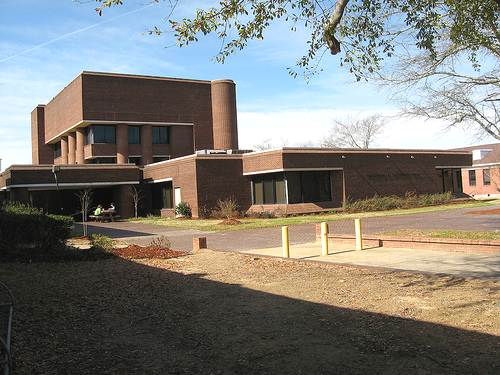
26 Tuskegee School of Veterinary Medicine You can read about the School of Veterinary Medicine at Tuskegee by clicking on the link.
Victor returned home to practice his profession for a few years, but later was offered a position at the U.S. Department of Agriculture in Washington D.C. where he remained until retirement. Washington D.C. is where he met his wife Nancy, who was a career officer in the U.S. Department of State Foreign Service Office.
Victor tells me that if his great grandfather, William Johnson, had not been a veteran of the Civil War with a pension, more than likely he could not have had the wherewithal to have pursued the legal trail to homestead a farm in Missouri. However, it was known at the time that enough land available for homesteading in Missouri was present which made it easier here than other areas to acquire land for only the cost of dealing with the legal work involved. But the paper work William had to file to get his pension, which was awarded because of an injury, was laborious. Again, I will collage some of the papers filed by William to receive his pension (photos 27 - 36):
Just click on any of the photo thumbnails to view a larger image.
At one time Miller County had a number of black families living here both north as well as south of the river. Peggy Hake has documented the history of black families in our county on our website.
While visiting Miller County Victor and Nancy went over to the Gott Cemetery between Ulman and Brumley and took some photos of the tombstones of William Johnson (photo 36a), Lydia Brown Johnson, William’s wife (photo 36b), and their infant son, Charles Johnson (photo 36c).
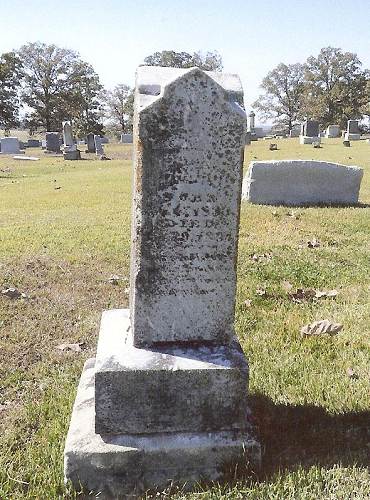
36a William Johnson Tombstone
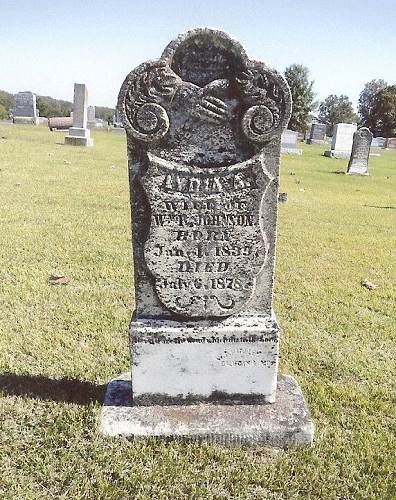
36b Lydia Johnson Tombstone
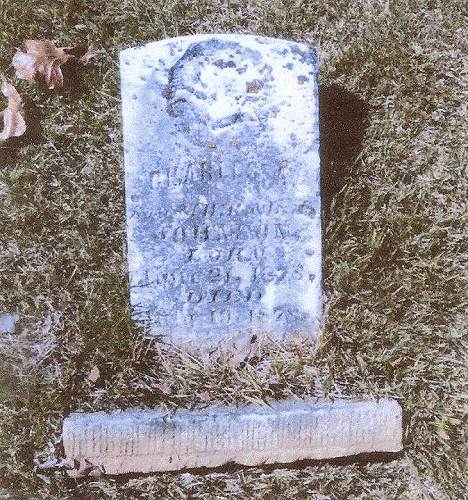
36c Charles Johsnon Tombstone Here is a photo of Victor between the tombstones (photo 36d):
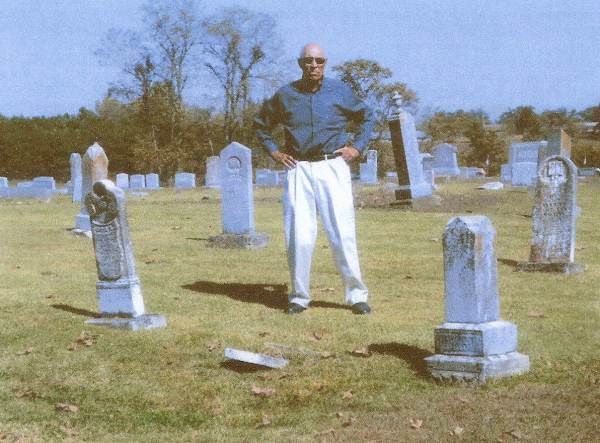
36d Dr. Victor Berry We are so grateful to have had the opportunity to visit with Victor and Nancy and to learn about the history of Victor’s great grandfather William Johnson, one of the early homesteaders of Miller County.
A couple of weeks ago I accompanied three of our museum staff who are our genealogists to the Spring Garden Cemetery (photos 37 and 38).
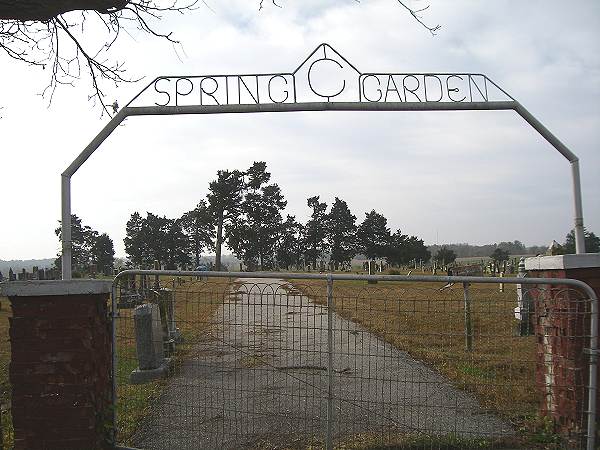
37 Spring Garden Cemetery Entrance
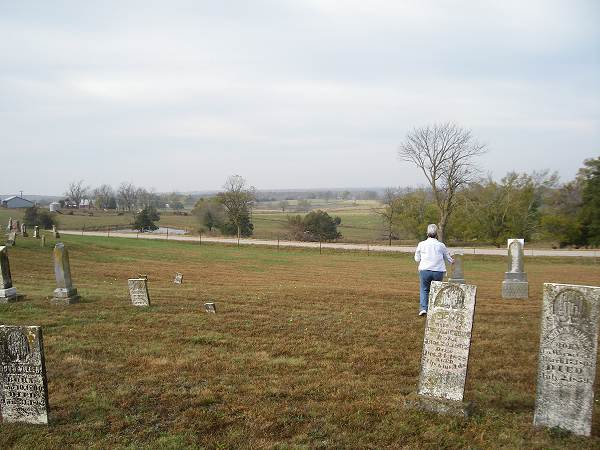
38 South view from Spring Garden Cemetery The three are Nancy Thompson, museum director, board member Karen Smith, and volunteer, Doris Wiggins. Here is a photo of the three hard at work back at the museum organizing some displays (photo 39).
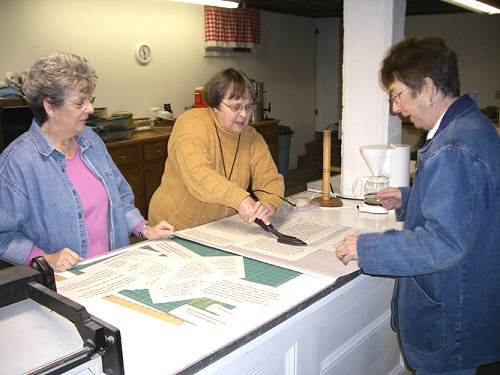
39 Karen Smith, Nancy Thompson and Doris Wiggins The objective of the trip was to identify some of the older tombstones which over time had suffered loss of clarity of their inscriptions. The Spring Garden Cemetery is on of our county’s oldest containing several graves in which the deceased was born before 1800. Due to time and weather exposure the oldest tombstones are difficult to identify because the engraved inscriptions have deteriorated.
Each of the ladies had brought their own tombstone rehabilitation kit. The kit contained special cleaning cloths, an application stick consisting of an especially designed colored powder to highlight the engraved letters, and a mirror to reflect sunlight in the most advantageous manner to improve the clarity of the engraved inscriptions. All the agents used for engraving identification were especially made to insure no harm occurred to the engravings. Photographs were then made of each tombstone which was of interest. The following collage of photographs have explanatory captions which demonstrate the techniques described above (photos 40 - 48):
Hover over the thumbnails to read the captions and click on any of the photo thumbnails to view a larger image.
Special attention was given to the tombstone of one very important early Miller County resident, that of William Miller. William was one of the first settlers to come to the county and was instrumental in its early development, especially regarding the acceptance by the state of Missouri of this area to be designated a county. The name of Miller was given to the county in honor of William’s uncle, John Miller, who at the time was governor of the state. Here is a photo of William and Sarah Miller’s tombstones (photo 49):
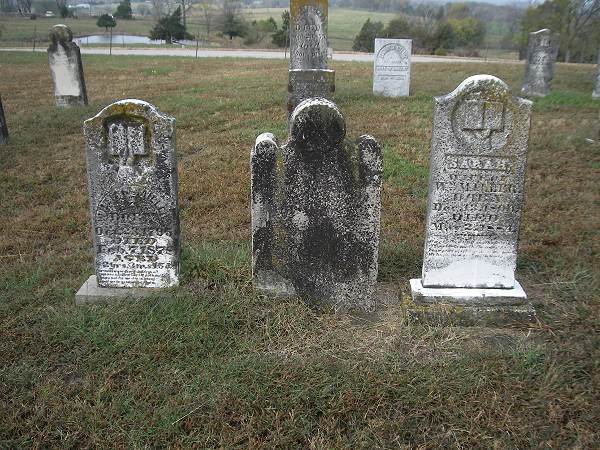
49 William and Sarah Miller Tombstones And here are photos of both William’s and Sarah’s tombstones before and after enhancement of the inscriptions (photos 50 - 53):
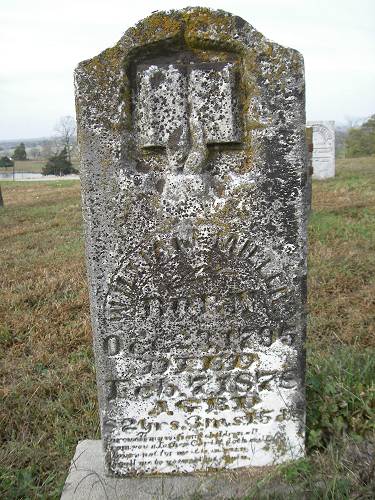
50 William Miller Tombstone
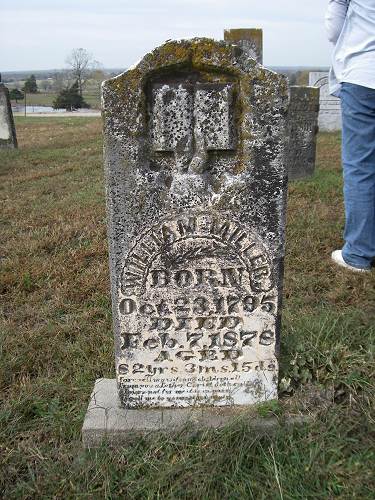
51 William Miller Inscription Enhanced
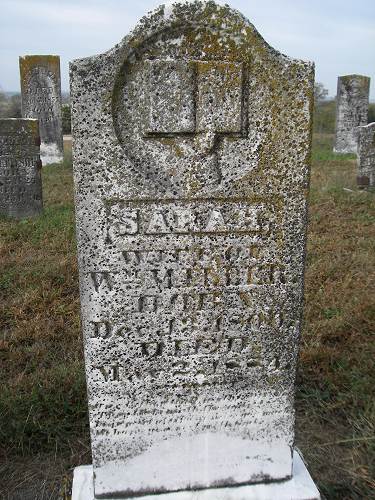
52 Sarah Miller Tombstone
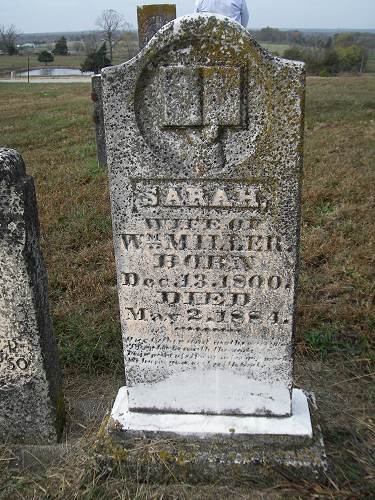
53 Sarah Miller Inscription Enhanced Another tombstone in the cemetery is that of Boyd Miller, brother of William, who accompanied William to this area early on and participated in its development (photo 54).
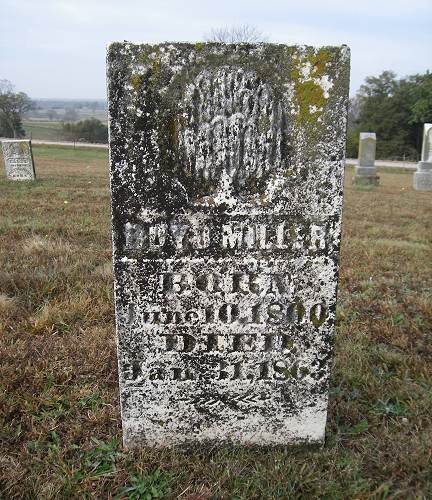
54 Boyd Miller Tombstone I had never observed the process by which tombstone engravings were enhanced for identification and maybe you hadn’t either. We are fortunate to have on our museum staff volunteers who have the training and experience as do Nancy, Karen and Doris.
You can read the story of William Miller at this previous Progress Notes.
Coming into Tuscumbia from the north on Highway 52, before the road starts its descent eventually going down to the Osage River Valley and the old town, one can look south to the other side of the river and see a hill top which rises above all the other hills on either side of it (photo 55).
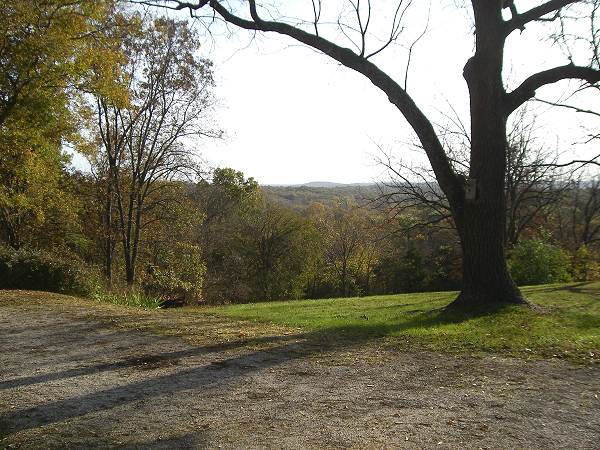
55 Knob Hill The view can be seen if one stands on the side of the road opposite where the semicircle drive with the Miller County History sign is located. Board member Jim Clark, who was born and raised over in that area south of the Osage River, tells me that his father, Arthur Clark, informed him that the hill in days long ago was known as “Knob Hill.” The hill is said to be the dividing line of water drainage between Coon Creek to the west and Panther Creek to the East near St. Elizabeth.
Again this week I will present another chapter from Vance Randolph's book, Ozark Superstitions p. 264-300. This week Vance writes about “Ozark Witchcraft” (photo 56):
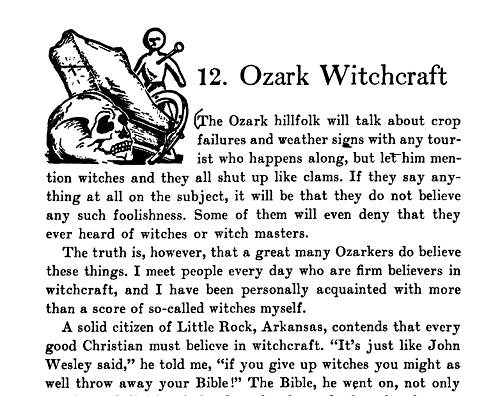
56 Ozark Superstitions - Ozark Witchcraft
Click image to read entire chapter in PDF formatIn this chapter, Vance references an issue of Life Magazine to which he submitted photos related to his research on Ozark witchcraft. The following is a collage of those photos taken from the June 19, 1939 edition of Life Magazine (photos 57 - 63):
Hover over the image to read the caption and just click on any of the photo thumbnails to view a larger image.
Refer back to the Progress Notes of August 30 to read Vance’s biography (photo 64).
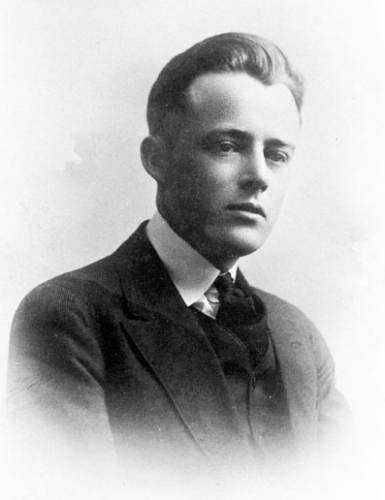
64 Vance Randolph I want to thank my website engineer, David Statler, for taking the time to locate the old Life Magazine edition and copy for our website the photos submitted to the magazine many years ago by Vance Randolph.
That’s all for this week.
 Joe Pryor
Previous article links are in a dropdown menu at the top of all of the pages.
|

